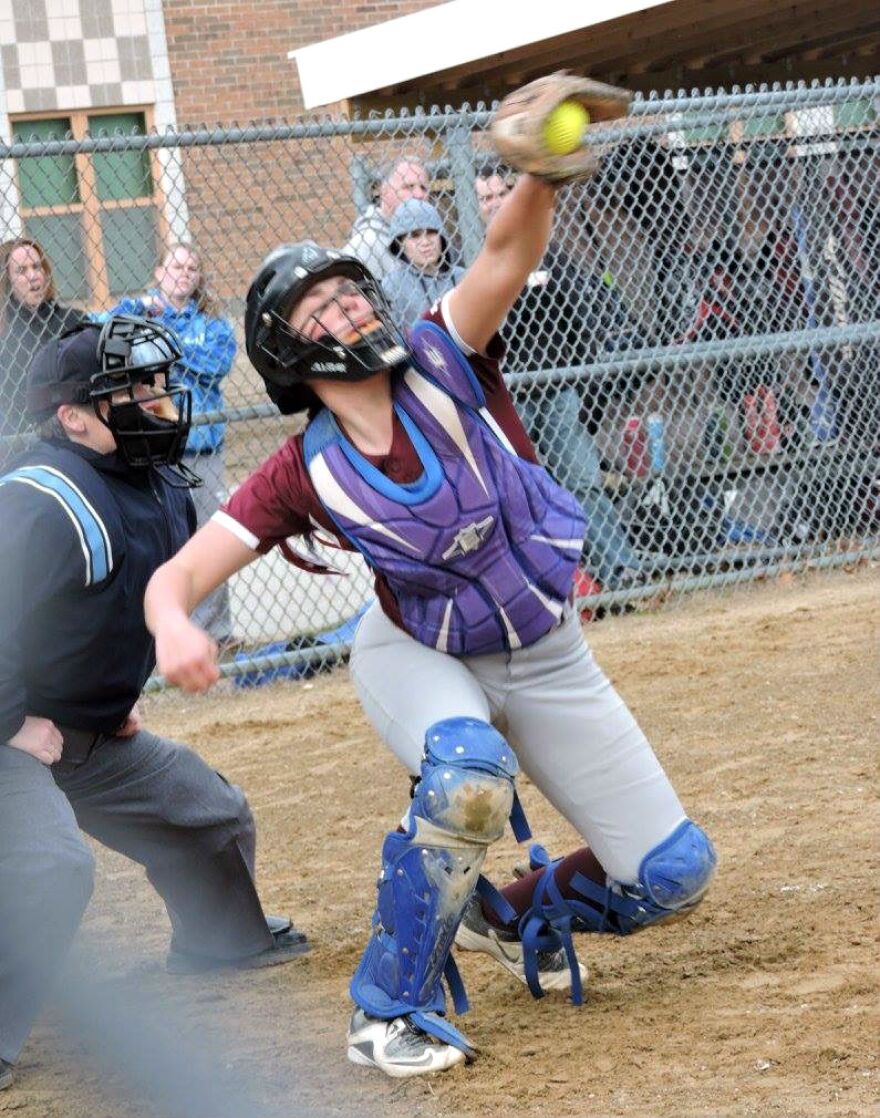An estimated 3.8 million concussions occur in the U-S each year, and around half of those go unreported. For viewers of sports, the injury can be uncomfortable to watch, but its impact to the athlete is often downplayed.
Two experts in Syracuse are trying to change the handling of concussion cases … and how they’re covered in media.
“I knew I was in a game but I was just kinda like, ‘how many outs are there; what just happened.’ and I just went back to playing because it comes naturally to me, so I was just like fine, and I seemed fine to them (coaches),” said former college softball player Caroline Baggeroer..

The Syracuse University student played softball for most of her life, including one year at the college level. She is now a junior studying neuroscience. She loves the game, and says she’s put her body through a lot because of the fear of falling behind or missing out on playing time, including suffering a concussion that went unreported.
“My coach came out to check on me and was like, ‘are you good’ and I was like obviously .Y’eah I’m fine,’ because I always said that,” added Baggeroer.
In a world with sports, concussions seem inevitable. But Olivia Stomski wants parents, coaches, players and especially the media to take them more seriously. She also wants to remove the pressure for athletes to get back in the game.
“When we say ‘hey he should take an Advil and go right back in,’ we’re teaching athletes and coaches and fans that being tough is more important than caring about yourself and these (other) athletes.”

Stomski is the director of the Newhouse Sports Media Center at Syracuse University.
“So we created a 3-hour workshop not only for students but also for people who are already in the industry to learn about terminology, to learn about protocols.”
Stomski started teaching workshops that encourage the next generation of sports broadcasters to know the signs and symptoms of a brain injury. She’s trying to teach the media to use correct terminology that points out the long term potentially life threatening affects.
“We give quite a few examples of situations where, not just because of media, but because brain injuries were not paid attention to, the outcome did not go well. So you get to see, ‘okay this happened, and how it was called, and how should it be called.’ And now, you look at it and you’re like, ‘okay that’s not funny. This is really bad, or it could be really bad.’”
But Stomksi says the lack of education is relevant at more than the college and professional level.
“It’s not just the NFL’s problem. It’s the NHL’s problem; NCAA’s problem, NBA’s problem. It’s all of our problems.”
MEDICAL EXPERTS SEE PROBLEMS IN HOW CONCUSSIONS VIEWED & MANAGED

Concussion Specialist at the Upstate Concussion Center, Dr. Brian Rieger, agrees and says it’s youth sports too.
“Even if you suffered a concussion in a club game, there’s no requirement for you to have a clearance note before you come back to play. It’s one of the changes we’re proposing to New York state law, to cover youth sports.”
Reiger started the concussion program at Upstate more than 15 years ago and has treated athletes who have suffered concussions. Still, he’s not against people playing sports.
“I was never afraid of my daughters playing soccer, and I saw concussions occur on the field. I was afraid that I wouldn’t be at a game and somebody wouldn’t recognize that concussion. That’s what I worry about, not getting the concussion; It’s how it’s managed.”
Baggeroer agrees and says the recognition of, and reactions to, head injuries seem to go hand-in-hand with the protocols that are in place.
“If I would’ve had that kind of a collision in a high school game, then he would have definitely taken me out, but it was my travel coach and they don’t really have strict protocols because it’s a separate private program. So they were just like, ‘are you good?’ They knew I was tough because I literally don’t get pulled out of games. I don’t let it happen.”
In many pro and collegiate sports, there are now concussion protocols, but these check marks aren’t in youth sports. The end goal is to get protocols in place. If people were more sensitive to head injuries, athletes might not suffer long term because of the pressure to play too soon.
And Stomski just wants to continue emphasizing how much the media play a role in the perception of how serious an injury might be.
“You can’t work in the media industry and not report on injuries. You can’t. Just as much as the ball goes in the air, the human body gets hit, and it goes down.”
Announcers and reporters have to have the accurate terminology to educate the audience. But Rieger says the media also need to be careful not to overly scare people.
“I think the media has to be sure it tries to balance the genuine true concern about concussion, that we do know more than we did before, and we have to take this seriously. But we also have to be careful that we don’t create anxiety about the injury or unnecessarily deter people from activities that may be healthy for them.”
Baggeroer doesn’t play sports anymore, but she has in fact studied traumatic brain injuries. And without concussion protocols that get injured or potentially injured athletes off the field, she doesn’t believe the minds of competitive and passionate athletes will change.
“I think the travel league should definitely be more aware because it’s just up to the coach to decide if they want to go through a specific protocol or not. Even knowing now, like I’m in neuro (science studies) and I know how severe TBI (Traumatic Brain Injury) can me. I probably to this day, I would stay in the game.”



